San Lorenzo Bridge
San Lorenzo Bridge and its hiking trail in Fermoselle. Discover how to get there and what to see.
The San Lorenzo Bridge, located in the province of Zamora, near Fermoselle, is one of the most fascinating historical sites in the region. This ancient medieval bridge is not only an engineering masterpiece of its time, but also the starting point for one of the most attractive hiking trails in the area. Along this route, visitors can enjoy a journey through time, surrounded by breathtaking natural landscapes.

San Lorenzo Bridge (Image rights Wikipedia)
History of San Lorenzo Bridge
Built during the Middle Ages, San Lorenzo Bridge has a rich and varied history. Originally, it served as a key route for merchants and travellers heading to Portugal. Over the centuries, it has witnessed countless historical events, including conflicts and changes in trade routes. In addition, local legend tells of a tragic ancient romance that adds an air of mystery to the place.
Features of the San Lorenzo Bridge
The San Lorenzo Bridge stands out for its medieval architecture, built in stone with a design that has stood the test of time. Although it has undergone several restorations, it retains much of its original structure. With its sturdy arches and solidity, the bridge is a remarkable example of civil engineering from the Middle Ages in Spain. Today, the bridge still stands, serving both as a tourist attraction and a reminder of local history.

Features of the San Lorenzo Bridge (Image rights Facebook yoymimochilaviajera)
Location of the San Lorenzo Bridge
The San Lorenzo Bridge is located a few kilometres from Fermoselle, a picturesque village known as the ‘Pearl of the Arribes’. This bridge is immersed in a privileged natural environment, forming part of the impressive landscape of the Arribes del Duero, a natural park that offers spectacular views and rich biodiversity.
The bridge crosses the River Tormes and acts as the boundary between the provinces of Zamora and Salamanca, as indicated by the inscriptions and signs at the site.

Border signs of the provinces of Zamora-Salamanca on the San Lorenzo Bridge (Image rights: José Luis Martín Fernández)
San Lorenzo Bridge hiking trail
The San Lorenzo Bridge hiking trail is a circular route that passes through some of the most beautiful landscapes of the Arribes del Duero. The route is moderately difficult and takes approximately 5 hours, although you will probably take longer because you will stop to enjoy the scenery, rest or have something to eat. During the walk, hikers can enjoy the local flora and fauna, as well as panoramic views of the River Duero and the surrounding canyons.
As a general rule, the route starts in the village of Fermoselle and we will make a ‘circle’ through the La Cicutina pass until we reach the San Lorenzo Bridge and turn back to finish the route at the same point where we started. There are several options to shorten or lengthen the route, but that is up to each individual to decide.
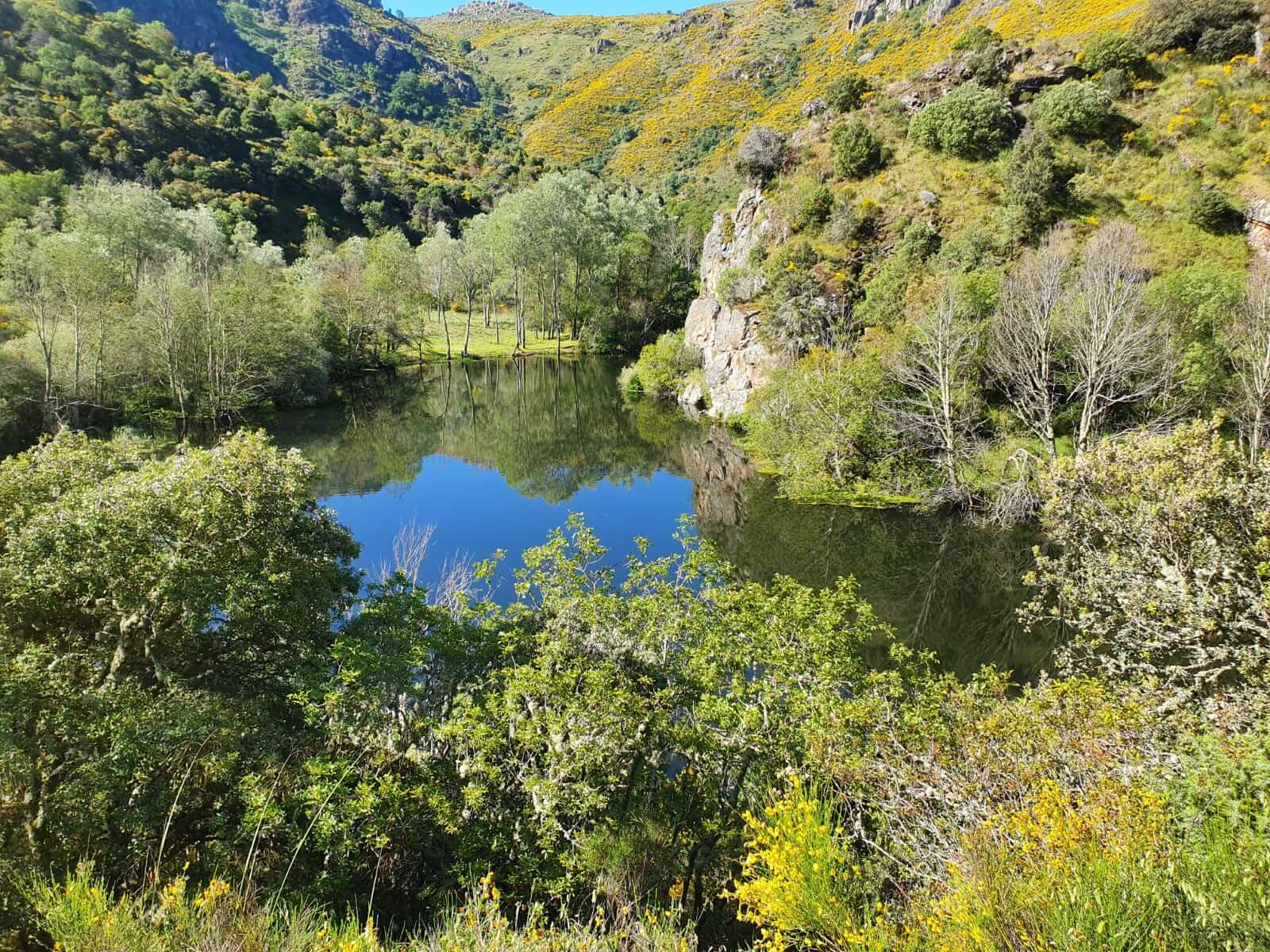
San Lorenzo Bridge hiking trail (Image rights Wikiloc juat)
Points of interest along the hiking trail
One of the main attractions of this route is the wide variety of landscapes that can be seen.
From dense forests to rock formations and open meadows, each section offers something different. Along the way, you will also find small remains of ancient buildings, such as mills, fountains and secondary bridges, which add a historical touch to the route.
The views from the natural viewpoints are spectacular, offering a unique perspective of the Arribes del Duero.
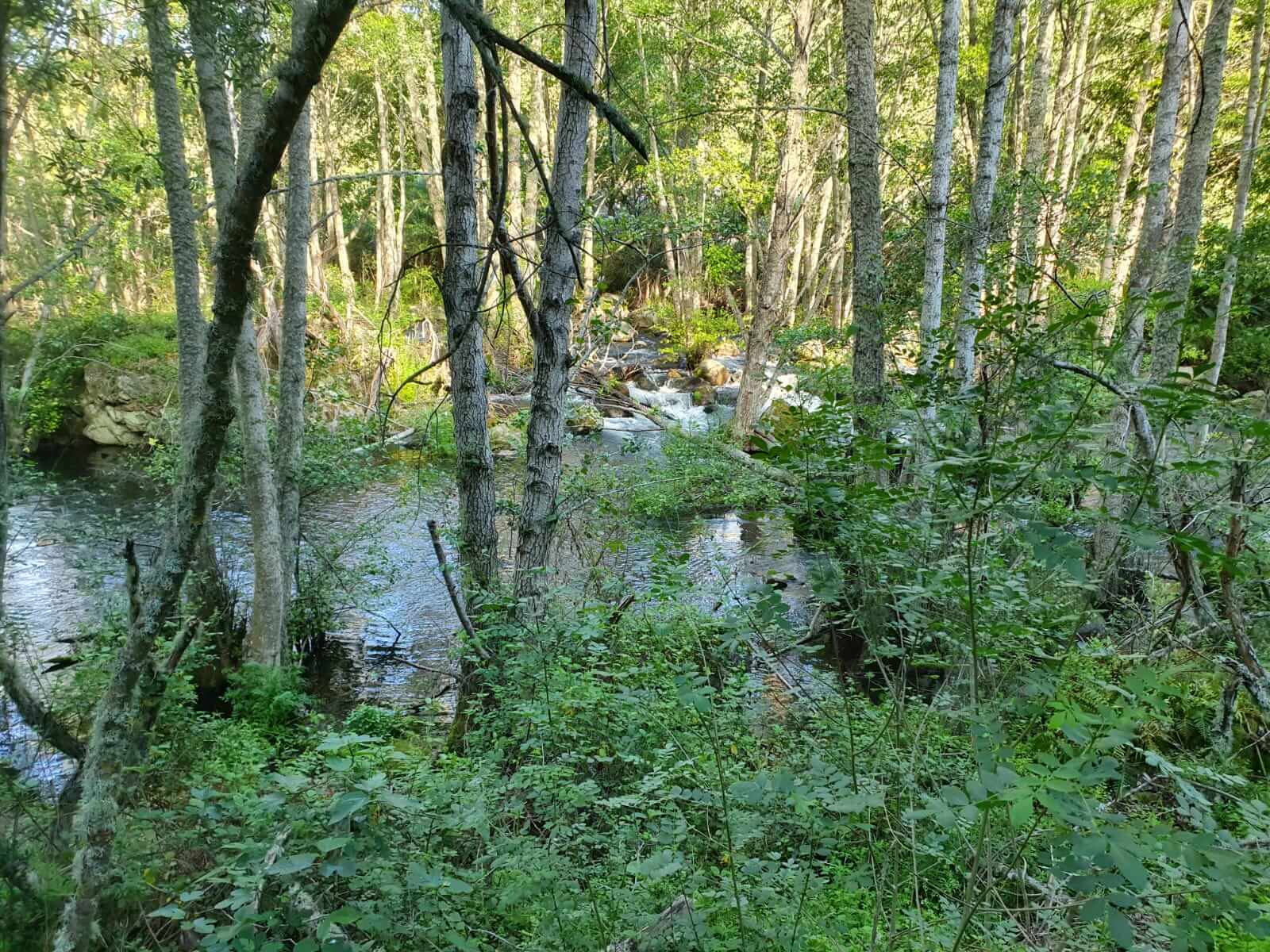
Landscapes along the San Lorenzo Bridge hiking trail (Image rights Wikiloc juat)
Preparing for the route
Before setting off on the route, it is important to be well prepared. We recommend wearing suitable hiking boots, comfortable clothing appropriate for the weather, and carrying a rucksack with water and energy-rich food.
A walking stick may also be useful on some of the steeper sections.
It is vital to follow the signs and stay on the marked trail to avoid getting lost.
Best time to hike the Puente de San Lorenzo trail
The best time to hike this trail is in spring or autumn, when temperatures are mild and the natural landscape is at its most beautiful.
In spring, wildflowers cover the fields and streams flow more strongly.
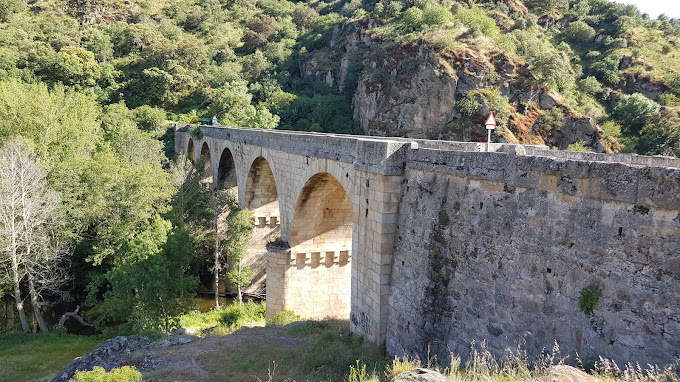
San Lorenzo Bridge in spring (Image rights Pedro Llorente)
In autumn, the golden and reddish colours of the trees create a magical atmosphere.
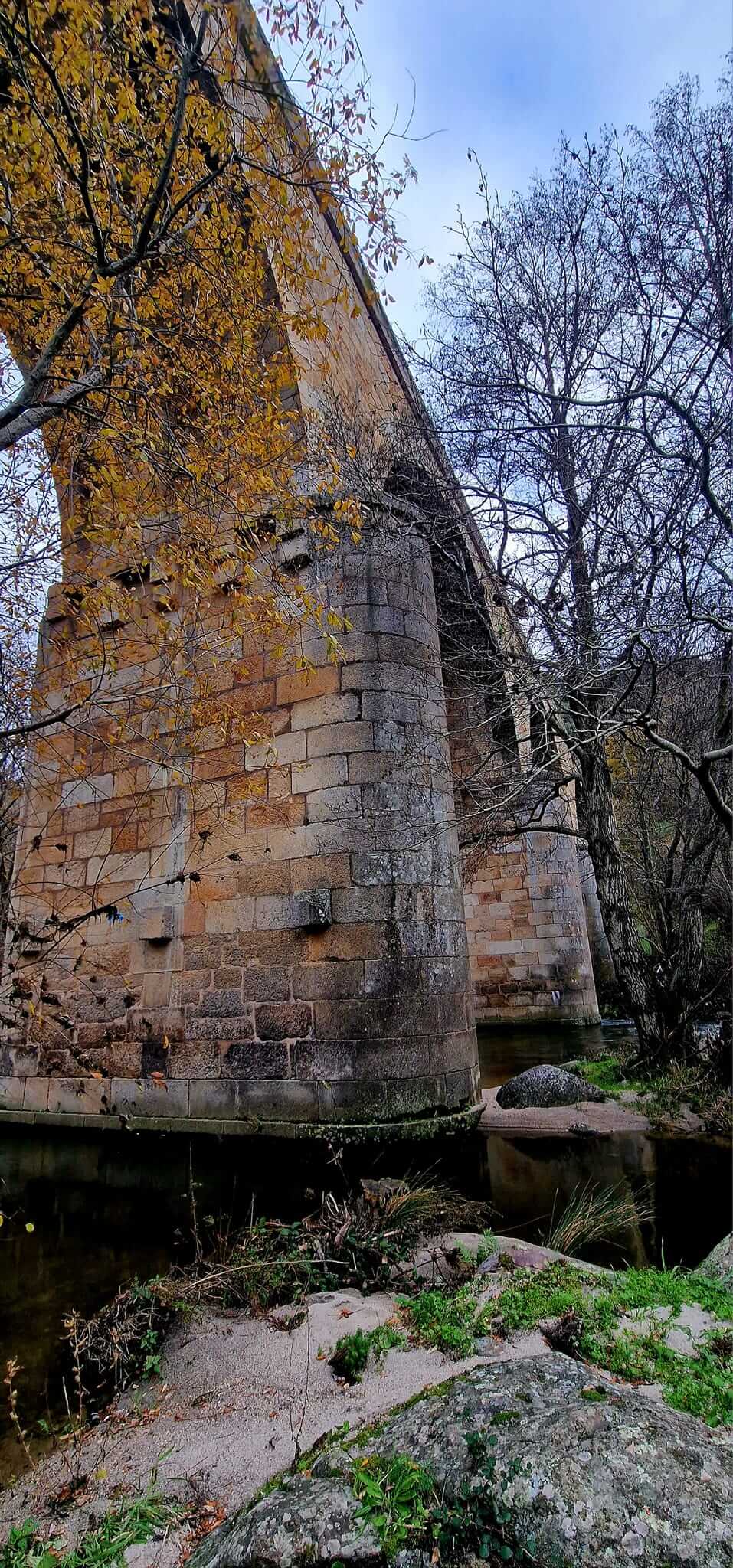
San Lorenzo Bridge in autumn (Image rights Facebook yoymimochilaviajera)
It is advisable to avoid the summer months, when the heat can be excessive, and the winter months, due to the possibility of heavy rain. Even so, there may be days or weekends during these periods when it would be fine to do the route. It all depends on the specific weather conditions on those days, so be sure to check the forecast a few days beforehand!
Even so, if you decide to visit the San Lorenzo Bridge on a hot day, you'll be pleasantly surprised when you get there. Bring your swimsuit and cool off with a refreshing dip in this spectacular landscape!
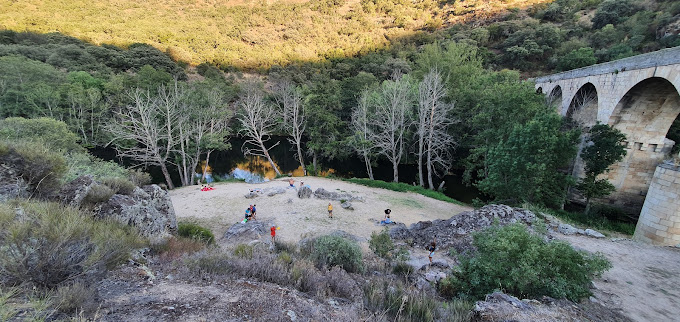
Bathing at the San Lorenzo Bridge (Image rights Mª Isabel ‘Mabel’ Corbalán')
Tips for hikers who want to do this route
It is advisable to start the walk first thing in the morning to avoid the hottest hours of the day and always carry a map or hiking app to make sure you don't stray from the path. Keep an eye out for the signs!
In addition, taking regular breaks to rest and enjoy the scenery is key to maintaining your pace and energy.
For those new to hiking, this route is ideal for beginners, as it offers a perfect balance between challenge and accessibility.
How to get to the San Lorenzo Bridge?
Getting to the San Lorenzo Bridge is an experience in itself, as it involves travelling along one of the most spectacular routes in the Arribes del Duero Natural Park.
There are several options for accessing the bridge, and below we present the most notable ones:
Route by car or motorbike via the Puerto de La Cicutina
If you are in Fermoselle, you can take the ZA-316 road towards the Puente de San Lorenzo to follow one of the most recommended routes, which crosses the Puerto de La Cicutina.
This route is about six kilometres long and takes just over 10 minutes by car. The road is narrow and winding, with steep slopes and sharp bends, making it an exciting route for drivers, but one that requires extreme caution.
During the journey, you can enjoy an impressive variety of landscapes. It is advisable to stop at certain points to appreciate the beauty of the surroundings without distractions.

Motorcycle route from Fermoselle to the San Lorenzo Bridge via the La Cicutina mountain pass (Image rights Daniel Cárdenas)
Hiking from Fermoselle
As mentioned above, there are several hiking trails to reach the San Lorenzo Bridge. These include more complex, easier, shorter and longer routes.
It all depends on whether you are an experienced hiker or a beginner. It is also important to know the places you want to visit along the route (viewpoints, fountains, old mills, etc.) and to calculate the time and distance involved.
Even so, practically all the route options start from Fermoselle or its surroundings.
Public transport
Although public transport is limited in this rural area, you can get to Fermoselle by bus from Zamora or Salamanca, and then continue on foot to the places you want to visit.
Although this method is not very common, it is a perfect option for the more adventurous and is a fantastic destination for backpackers.
Additional activities in the area
After completing the San Lorenzo Bridge hiking trail, there are many other activities to enjoy in the Fermoselle area.
You can also visit the village of Fermoselle, the starting point of the trail, which, with its medieval charm, offers a rich history to explore, including its famous castle and viewpoints.
In addition, the Arribes del Duero is known for its hiking trails, ideal for nature and adventure lovers. We recommend the Waterfall Trail and the Viewpoint Trail.
Eating and staying in the Fermoselle area
One of the best ways to end a day of hiking is to sample the local cuisine. Typical dishes of the region include roast lamb, veal chops, artisan sausages and cheeses, and the traditional bacalao a la frontera (cod).
In Fermoselle, several restaurants and taverns offer high-quality home-cooked food, accompanied by wines from the Arribes Designation of Origin.
For those who wish to spend more time exploring the region, Fermoselle offers a variety of accommodation options. From charming rural hotels to country houses and inns, there is something for every taste and budget.
We recommend a rural inn with a special charm, which also has a restaurant, so you can eat and stay in the heart of the Arribes del Duero.
Visitor testimonials and experiences
Visitors who have travelled the San Lorenzo Bridge route speak of the tranquillity and beauty of the surroundings.
Many highlight the sense of peace experienced when walking through such an ancient and well-preserved landscape.
Others mention the historical richness of the route and the satisfaction of having discovered such an authentic and characterful corner of Spain.
Conclusion and final recommendations
The San Lorenzo Bridge and its hiking route offer a unique experience, combining history, nature and adventure.
This route is ideal for those looking to disconnect and enjoy the serenity of the Zamora countryside. Whether you are an experienced hiker or simply want a quiet getaway, this route is a perfect choice.
And after a day of hiking, there is nothing better than enjoying the hospitality of La Posada de Doña Urraca in Fermoselle. This charming establishment is the ideal place to relax, sample authentic local cuisine, including fresh regional produce, and unwind in a cosy, traditional atmosphere.

